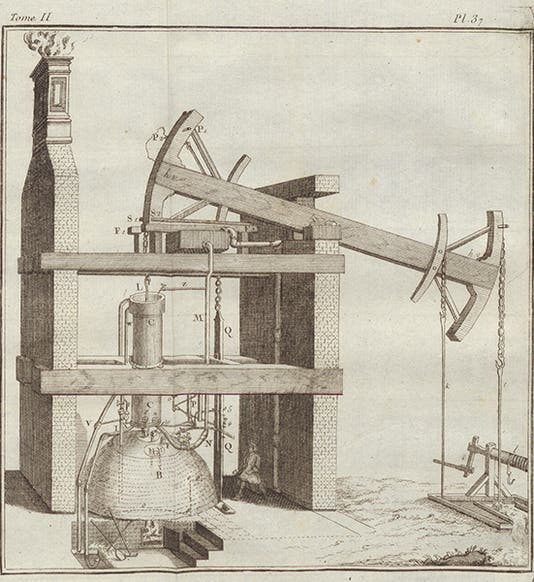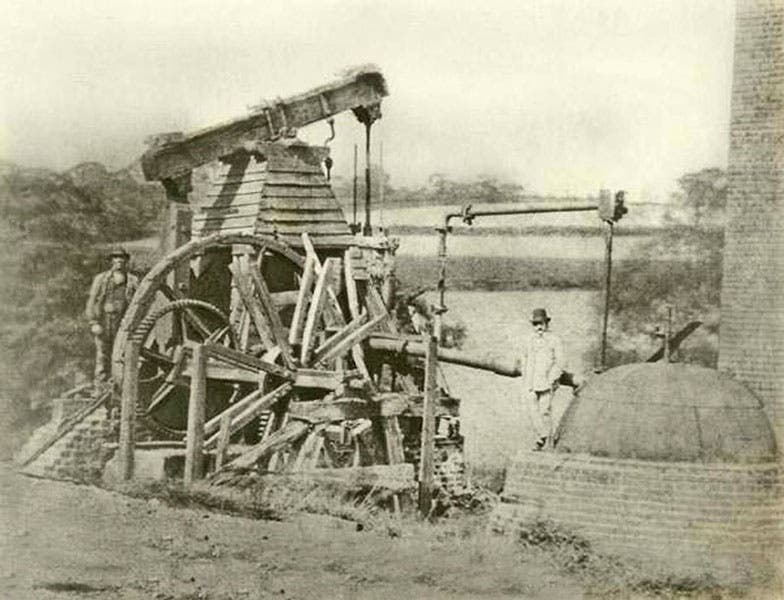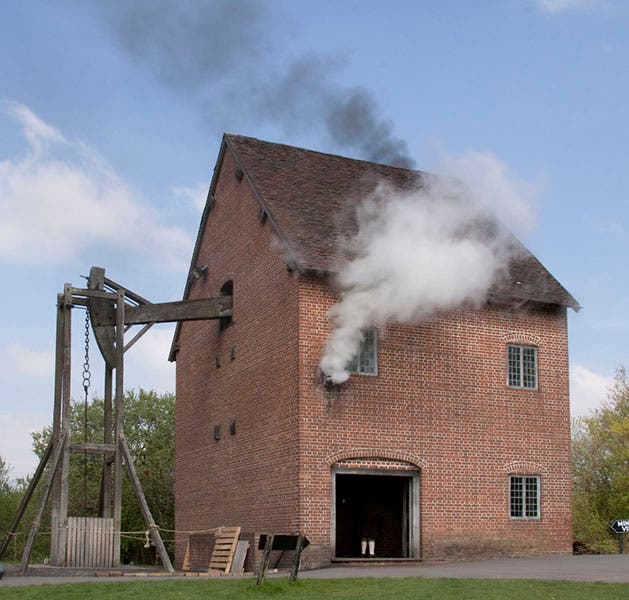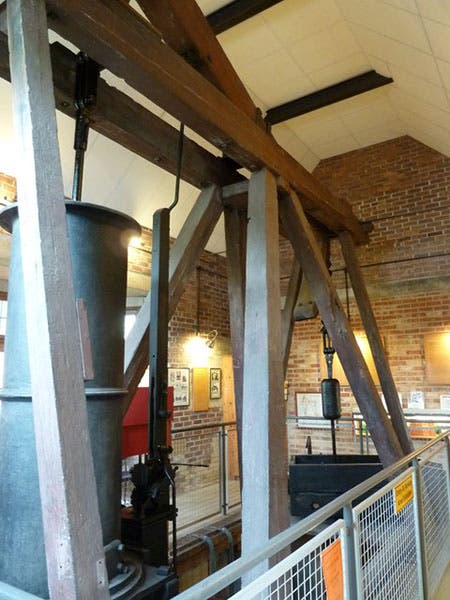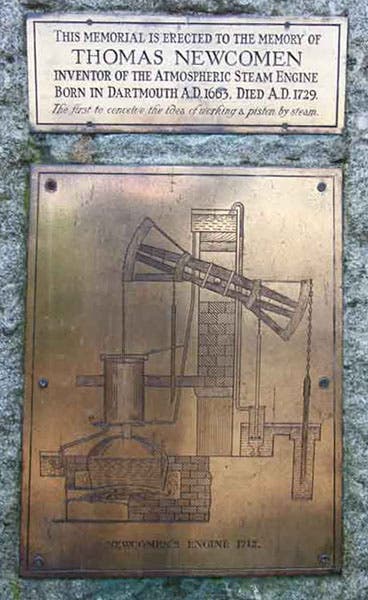Scientist of the Day - Thomas Newcomen
Thomas Newcomen, an English journeyman ironworker and inventor, died Aug. 5, 1729, at the age of 66; his date of birth is unknown. In 1712, Newcomen and a partner, John Calley, designed and installed the first working piston-driven steam engine in the mines near Dudley Castle in the West Midlands. Previous investigators such as Thomas Savery had built steam-powered devices to raise water out of mines, but the Savery pump was impractical, since it could only raise water about 30 feet, and it was very inefficient. Others, such as Denis Papin, had realized that one could use the weight of the atmosphere to drive a piston, if you somehow removed the air from the other side of the piston, and although he demonstrated a model, he never built a practical engine.
Newcomen essentially combined Savery’s steam vacuum pump with Papin's atmospheric piston to make the first steam engine that one could actually use. We have several diagrams of Newcomen atmospheric engines in our 18th-century collections; we show one from a mid-century work by Desaguliers (first image). Here is how it works: The dome at the bottom is a steam boiler. Atop the boiler is a large tube, within which sits a piston. Steam is fed into the cavity beneath the piston and pushes it up. When it reaches the top, water is injected into the cylinder, the steam condenses, the pressure drops to near zero, and the weight of the atmosphere pushes the piston down, so the cycle can begin once again. If you are confused, there is a surprisingly helpful animation of a Newcomen engine on Wikipedia. Just remember: pink is steam, blue is water.
Newcomen's other brilliant idea was the horizontal beam. Pivoted in the middle, the beam can rock up and down. One end is attached to the piston, and the other to a bucket that fits closely inside a vertical tube. The tube can be hundreds of feet deep – there is no real limit, except for the weight of the linking rods. When the piston goes up, the bucket does down (it has valves in the bottom to let the water through when it descends). When the piston goes down, the bucket pulls the water up, and it flows out into a sluiceway. The piston of the very first Newcomen engine rose and fell 12 times a minute, pumping 120 gallons out of the mines in that minute.
The Newcomen engine was an immediate success. Within 20 years, over 120 engines had been installed in England and Europe, and by 1800, there were over fourteen hundred. For industrial purposes, the Newcomen engine would be superseded by the Watt-Boulton engine of 1775. which used high-pressure steam to power the piston in both directions, and which had a separate condenser for cooling the steam, so that the entire cylinder did not have to be cooled and then reheated on each stroke. But for pumping out mines, the inefficient Newcomen engine worked just fine, as long as there was plenty of junk coal to power it, and it was in use until well into the 19th century. We include an old photo of one, still doing its job at a colliery in 1850 (second image).
Many historians are of the opinion that if we want to identify one key development that kick-started the industrial revolution, the Newcomen engine at Dudley is the best candidate. The potential of the machine to drastically modify and improve working conditions was apparent immediately, and really for the first time. So Newcomen deserves considerably more credit than he normally gets. As far as I can tell, there is not one Newcomen statue anywhere. Granted, we have no idea what he looked like, but that did not stop admirers of Elcano and Hippocrates from commemorating their heroes in bronze and marble. There is a museum in Dudley that is working hard to give Newcomen his due; they have installed a working replica of a Newcomen engine as part of their Black Country Living Museum (third image, above), and in Dartmouth, his home town down in Devon, the town fathers have installed a real 1725 Newcomen engine, which I do not believe actually works, but which does have its original near-300-year-old beam (fourth image). They also have commissioned a very nice memorial plaque (fifth image, below)
One last point: Newcomen was a Baptist. This means that, as a dissenter from the Church of England, he was denied access to the university system, so he pretty much had to educate himself and make his own way. Fortunately, the dissenters stuck together, founding their own schools and banks and helping finance and support each other. It is surprising how many of the key scientific figures in the 18th century – men like Joseph Priestley, Jeremiah Dixon, and Thomas Young – were religious dissenters, so it might have been helpful to some individuals to be forced to work outside the system, teaching them perhaps to think outside the system as well. Newcomen doesn’t seem to have been hindered greatly by his exclusion from mainstream career paths.
Dr. William B. Ashworth, Jr., Consultant for the History of Science, Linda Hall Library and Associate Professor emeritus, Department of History, University of Missouri-Kansas City. Comments or corrections are welcome; please direct to ashworthw@umkc.edu.

